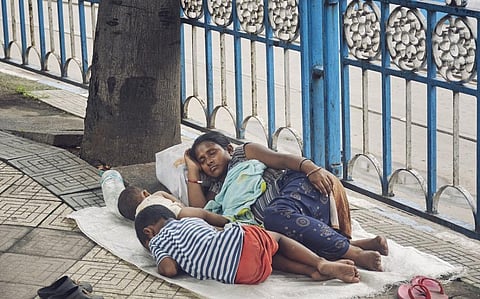

India recorded the second highest number of maternal deaths in 2020, coming second at 24,000 to only Nigeria which saw 82,000 maternal deaths in the pandemic year. However, there has been an overall reduction of 73.5 per cent in maternal mortality ratio (MMR) in India — deaths per lakh live births — between 2000 and 2020, findings from the latest United Nations’ report on Trends in Maternal Mortality released February 23 showed.
In 2020, India’s MMR stood at 103, a vast improvement from 384 at the turn of the century. In comparison, other developing countries like Argentina (45 MMR in 2020), Bhutan (60), Brazil (72), Kyrgyzstan (50) and Philippines (78) have performed better than India.
Globally, there were an estimated 287,000 maternal deaths in 2020, the UN report showed. This is only a marginal improvement from 309,000 in 2016 when the Sustainable Development Goals (SDGs) were established.
“While the report presents some significant progress in reducing maternal deaths between 2000 and 2015, gains largely stalled, or in some cases even reversed, after this point,” the UN report noted.
Between 2016 and 2020, Europe and North America, and Latin America and the Caribbean saw a 17 per cent and 15 per cent increase in maternal mortality respectively.
Australia and New Zealand, and Central and Southern Asia recorded significant improvement, seeing a 35 per cent and 16 per cent decline respectively in maternal mortality during the same period.
Maternal deaths remained concentrated in poor countries and conflict zones, with sub-Saharan Africa accounting for 70 per cent of all maternal deaths in 2020. Moreover, countries rife with conflict recorded a MMR of 551, compared to the world average of 223.
“While pregnancy should be a time of immense hope and a positive experience for all women, it is tragically still a shockingly dangerous experience for millions around the world who lack access to high quality, respectful health care,” said Dr Tedros Adhanom Ghebreyesus, director-general of the World Health Organization (WHO).
“These new statistics reveal the urgent need to ensure every woman and girl has access to critical health services before, during and after childbirth, and that they can fully exercise their reproductive rights.”
Severe bleeding, high blood pressure, pregnancy-related infections, complications from unsafe abortion, and underlying conditions that can be aggravated by pregnancy (such as HIV/AIDS and malaria) are the leading causes of maternal mortality.
All of these are not only preventable but also treatable in the presence of adequate healthcare infrastructure and human resources. Unfortunately, “underfunding of primary health care systems, a lack of trained health care workers, and weak supply chains for medical products are threatening progress” on improving maternal mortality.
Moreover, not enough women — a third — are going for even four of the mandated eight antenatal care check ups. As per the UN report, modern family planning methods are unavailable to some 270 million women.
“Reducing maternal mortality remains one of the most pressing global health challenges,” said John Wilmoth, director of the Population Division of the Department of Economic and Social Affairs.
“Ending preventable maternal deaths and providing universal access to quality maternal health care require sustained national and international efforts and unwavering commitments, particularly for the most vulnerable populations. It is our collective responsibility to ensure that every mother, everywhere, survives childbirth, so that she and her children can thrive.”